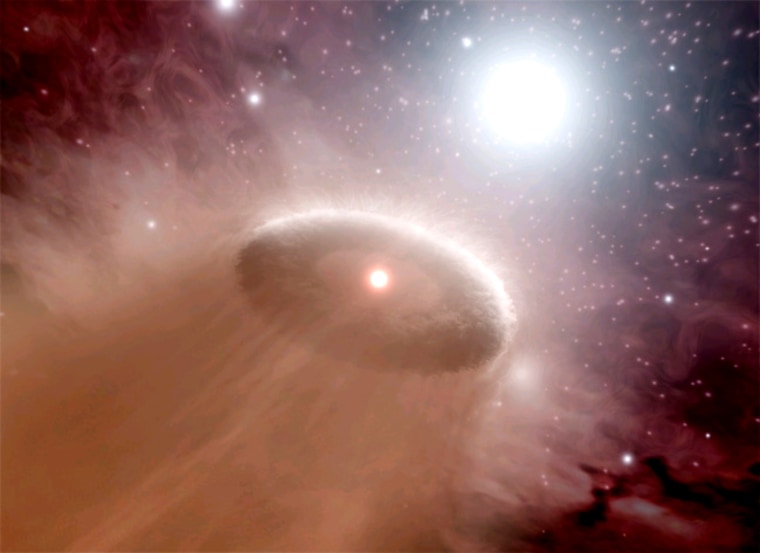Astronomers have determined how far away from its hot stellar neighbors a star must be if a swirling disk of dust around it is to stand a chance of forming planets.
Using NASA’s Spitzer Space Telescope, scientists created the first maps of so-called planetary “danger-zones,” areas where winds and radiation from super-hot stars can strip younger, cooler stars like our sun of their planet-forming materials.
The findings suggest that so long as cool stars lie beyond about 1.6 light years, or nearly 10 trillion miles, of any hot stars, they can form planets.
“Stars move around all the time, so if one wanders into the danger zone and stays for too long, it will probably never be able to form planets,” said study leader Zoltan Balog of the University of Arizona.
The study, to be detailed in the May 20 issue of Astrophysical Journal, will help astronomers pinpoint the types of cosmic environments conducive for planet formation.
Planets are created in flat disks of gas and dust, called protoplanetary disks, which swirl around young, cool stars. According to standard planet-formation theory, over millions of years the particles clump together and grow in size like dust bunnies.
Previous studies found that the fragile protoplanetary disks can be destroyed by radiation from the most massive, hottest stars in the universe, called O-stars, in a process called photoevaporation. Ultraviolet radiation from an O-star heats and evaporates the dust and gas in the disk, while stellar winds blow the material away.
A stellar danger-zone
The team used Spitzer to search for disks around 1,000 stars in the Rosette Nebula, a turbulent star-forming region located 5,200 light-years away. The stars range from one-tenth to five times the mass of the sun and are between 2 to 3 million years old. All are located close to at least one O-star.
The scientists found that the closer the cool stars were to their O-stars, the less likely they were to have disks. Beyond 1.6 light-years of an O-star, about 45 percent of the stars had disks, while only 27 percent of those located within the danger zone of an O-star had disks.
“The edges of the danger zone are sharply defined,” Balog said. “It is relatively safe for protoplanetary disks outside it, whereas a disk that gets dragged along by its star to be really close to an O-star could disappear in as fast as a hundred thousand years.”
That could put the brakes on just-developing planets. However, if a planet were already fully-formed when its star drifted into the danger zone of an O-star, it could potentially survive, astronomers say.
The new findings also have implications for planet formation around O-stars themselves, said study team member George Rieke, also of the University of Arizona.
“They would have to form pretty quickly,” Rieke told SPACE.com. “It doesn’t rule out the possibility completely. There are planets around pulsars, for example, but they must have formed by some rather different mechanisms.”
Pulsars are spinning stellar corpses that also emit large amounts of radiation.
